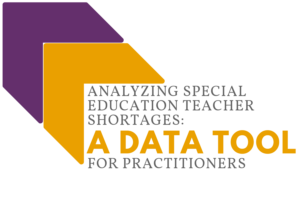About the Toolkit
Special education teacher shortages have existed for decades. Unfortunately, the urgent need for short-term solutions to fill vacancies often works in opposition to long-term, systemic efforts to create an effective teacher workforce.
The Educator Shortages in Special Education Toolkit is organized around the guiding principle that short-term strategies to meet immediate demand must be intentionally paired with long-term, systemic strategies to attract, prepare, and retain effective special education teachers to create comprehensive shortage solutions.
The Toolkit is organized around a Facilitator’s Guide and three supporting sets of tools. If this is your first visit, we recommend starting with the Facilitator’s Guide.









